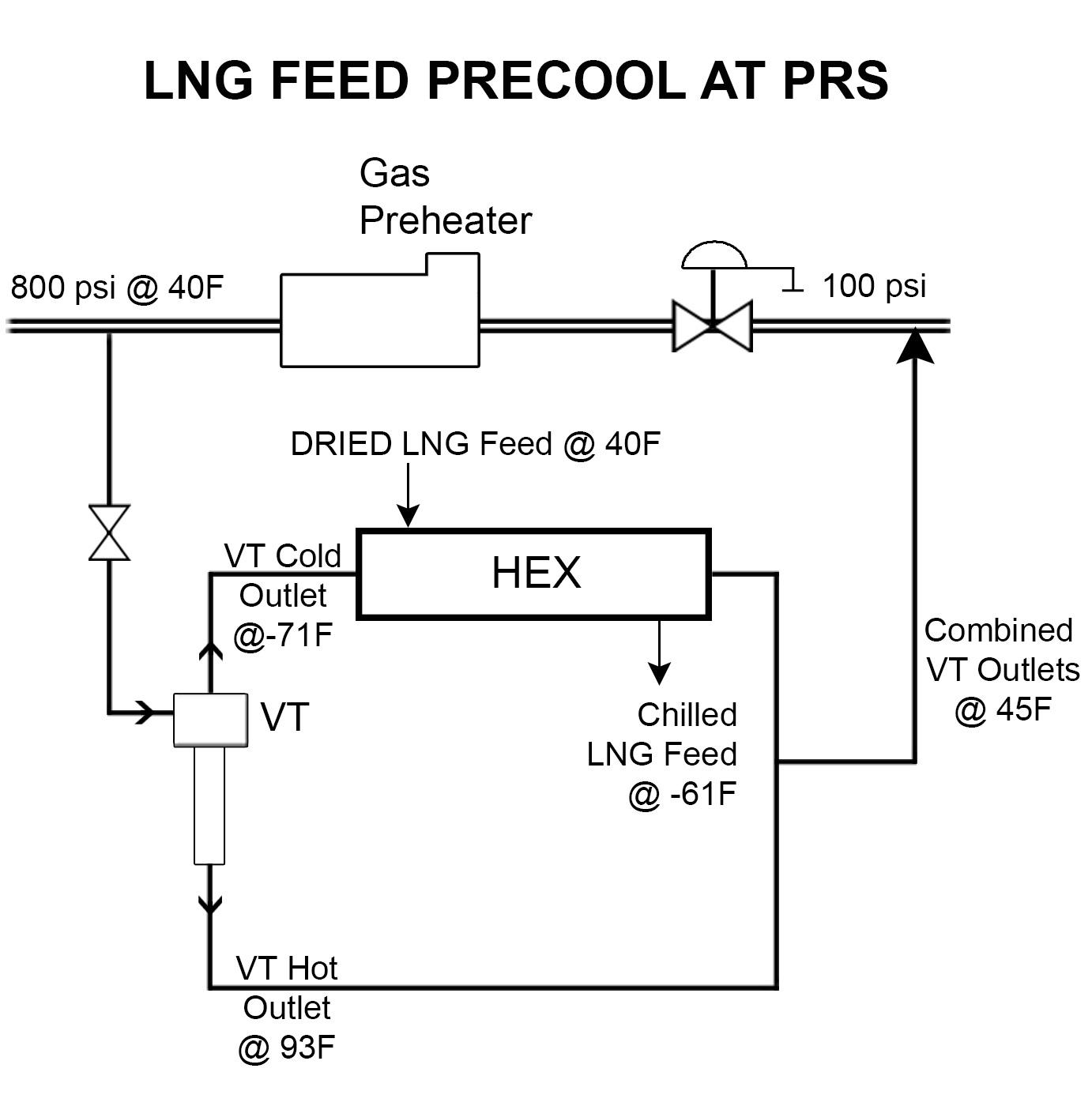VORTEX LNG FEED GAS PRECOOLING SYSTEM
UVI's Self-Heating Vortex Tube can be used to pre-cool an LNG feed,
substantially reducing the energy required to achieve cryogenic temperatures.
System Overview
Natural gas (generally pressure regulated pipeline or wellhead gas) conversion into LNG takes place at gas temperature of -260°F (-162°C) and pressure of approximately 4 psig. The large energy consumption required to achieve cryogenic temperatures can be substantially reduced by placing the LNG plant in proximity to City Gate/PRS or wellhead and utilizing the available at letdown facilities pressure differential to operate a Vortex Tube.
The inevitable freeze up in a conventional pressure reduction station would require an expensive drying and/or preheating of high pressure gas, which will impact LNG plant inlet gas temperature and consume a significant amount of energy.
In the UVI solution, a separate pressure regulated gas flow, cooled by a combined Joule-Thomson and vortex phenomenon, is applied to precool LNG feed gas.
The core of this UVI technology is the non-freeze (self-heating) Vortex Pressure Reducer (VPR). The VPR configured as Dual Stream Vortex Tube (VT) operates as a primary pressure regulator of a small portion of non-preheated pipeline or wellhead gas.
The ‘vortex’ solution offers a substantial precool of LNG feed gas without consumption of any external, manmade source of cryogenic cooling. The ‘vortex’ chilling generated in the Vortex Tube’s assisted pressure regulation of natural gas is an energy saving and environmentally friendly addition to a conventional process of LNG production.

Example: Achieving a 34% Energy Savings
The energy saved with the ‘vortex’ precool of LNG feed is expressed as follows:
E saved = ∆ T vortex/∆T, where ∆T vortex is the ‘vortex’ LNG feed precool value and ∆T is the gas temperature difference between pipeline gas temperature and -260°F
Energy saved: -61°F – (-260°F)/40°F – (-260°F) = 0.66
Saving 34% of Energy Required to Produce LNG!
'Vortex' energy saving value is variable and is proportional to the available VT’s ‘in/out’ gas pressure ratio at a Pressure Letdown facility. At large pressure ratios where vortex tube can operate in series, the energy saving nearly doubles (well head applications) or triples (CNG powered ‘vortex’ LNG gas precool)
In the course of vortex LNG feed precool, VT flow is always just a portion of gas main flow passing through a Letdown facility; the technology also provides for no single cu. ft. of VT gas flow lost in operations.
There is no practical limit on vortex tube gas flow rate and pressure in the vortex LNG feed gas precool.

